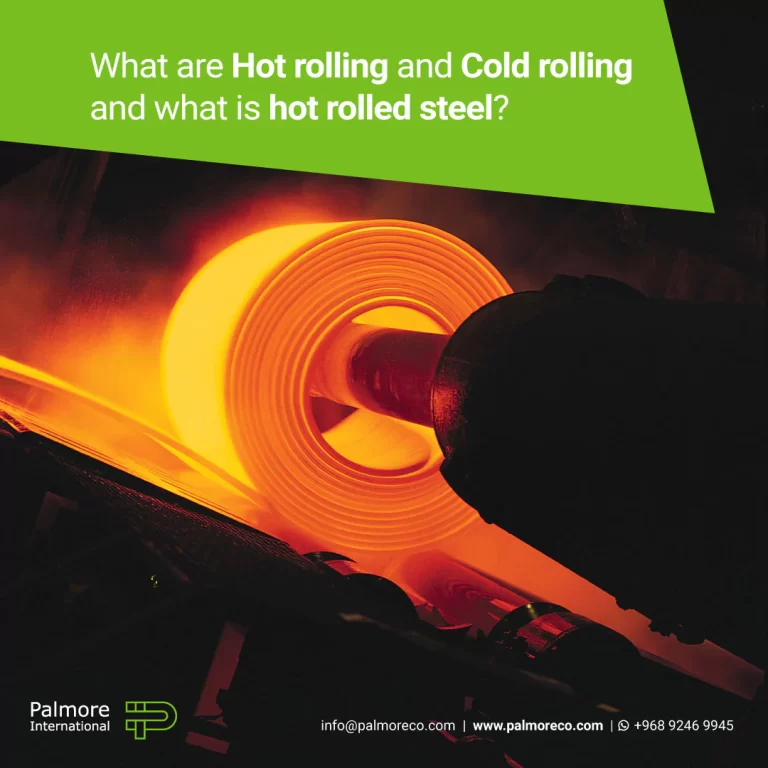
Hot rolling and cold rolling and hot rolled steel
What are Hot Rolling and Cold Rolling?
Hot rolling involves passing a hot ingot through two rotating rollers that rotate in two opposite directions at the same speed. This process is performed at temperatures above 925 ° C. (Cold rolling) is the process during which the metal product is polished at low temperature (room temperature) after passing the cold rolling stage. The difference between Hot rolled steel and Cold rolling steel is in their appearance and strength. Cold rolling products have a more beautiful surface and higher strength. Understanding the differences between hot rolled steel and cold is useful in choosing the right product.
Hot rolling
Hot rolling involves passing a hot ingot or billet through two rotating rollers that rotate in two opposite directions at the same speed. The ingot or billet is passed through the rollers until they reach the desired thickness. Adjust the distance between the rolls to bring the metal section to the desired thickness. This distance is always less than the thickness of the ingot used. As the metal passes through the rolls, changes in its molecular structure occur. When the ingot is compressed, the molecules are pulled in the direction of rolling. The production of corrugated fabric sheets, black sheets and acid washing sheets is done through this process. Hash is also mainly produced by hot method.
Cold rolling
Cold rolling is a process performed to create a smooth and clear surface on a metal section that has already been pre-heated. This process is performed at room temperature or close to room temperature. Before cold rolling is performed, the product that has been heated by rolling must be cleaned by washing with acid and other operations. To produce sheets with a completely smooth and clean surface, annealing and acid washing are performed before rolling the plate. Aluminum sheets, galvanized sheets, oil sheets and colored sheets are produced through this process.
Related article:
About hot rolling process
What is Hot Rolled Steel?
Hot rolled steel is a steel that is pressed at a very high temperature (more than 1700 degrees Fahrenheit) which is higher than the recrystallization temperature for most steels. The hot rolling process makes the resulting steel sections easier to shape and easier to work with. Hot rolling processing begins with a steel ingot or billet. During this process, the ingot is heated and then sent to the pre-processing stage where it is smoothed in a large roll. During these steps, the temperature is kept high and the ingot or billet is passed through a series of rollers to reach the final and required dimensions. Hot steel strips pass through the rollers at high speed.
What are the specifications of Hot rolled steel?
Hot rolled steel is often identified by the following characteristics:
Partial distortion.
Scale-like surface in the product that is created due to cooling and release from extreme temperatures.
Their edges and corners are slightly rounded. Because hot rolled steel sections shrink slightly after cooling. This is the case for bar products and sheets.
Scaly surfaces can be removed by grinding or acid washing. After removing the skins, work is done. This operation helps to make the painting and other methods of coating the steel cross-section better and easier.
Advantages and uses of hot rolled steel
Hot rolled steel usually requires less processing than cold rolled steel; As a result, the price of hot rolling steel sections will be cheaper.
It is possible to cool the steel section at room temperature; Without creating internal stresses due to cooling in the product.
Hot rolled steel Uses:
Hot rolled steel is used where:
Superficial beauty or appearance is not important and considered.
Distortion or rounding of the end sections of the metal section is not important.
Dimensional tolerance is not as important as the overall strength of the material.
Given the above, the applications of hot rolled steel sections can be used in the construction of railways and construction projects.

